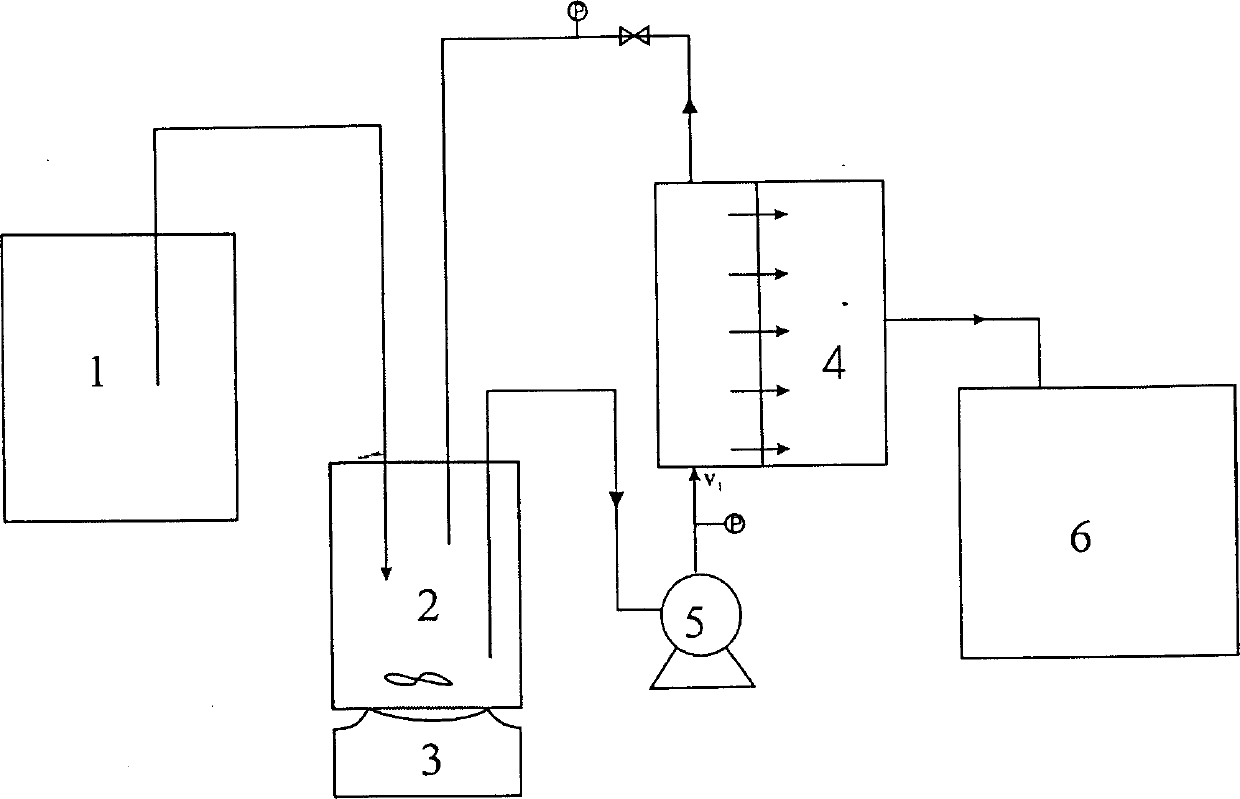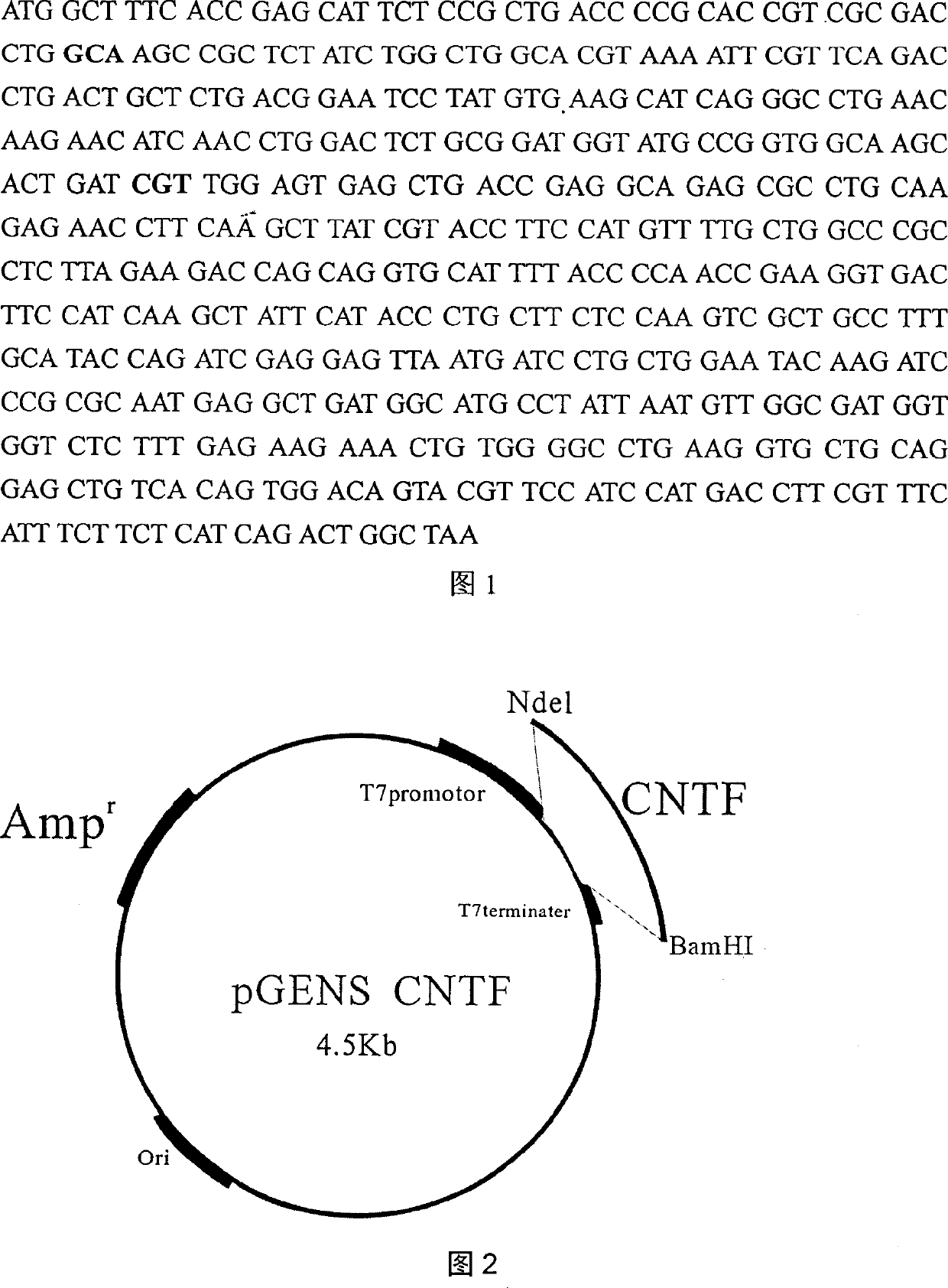Production process of neurotrophic factor
A neurotrophic factor and production method technology, applied in the field of genetic engineering, can solve problems such as being unsuitable for large-scale preparation, and achieve the effects of shortening renaturation time and reducing polarization phenomenon
- Summary
- Abstract
- Description
- Claims
- Application Information
AI Technical Summary
Problems solved by technology
Method used
Image
Examples
Embodiment Construction
[0013] In order to improve the stability and biological activity of CNTF protein, compared with natural human CNTF, the primary structure has been changed, which is characterized in that the 17th cysteine is changed to alanine (Cys 17 →Ala 17 ), the 63rd glutamic acid becomes arginine (Gln 63 →Arg 63 ), and remove the terminal 15 amino acids. At the same time, according to the characteristic that the codon preference of Escherichia coli is different from that of humans, the CNTF gene sequence was optimized and designed [see Figure 1]. Specifically, the codon corresponding to each amino acid in the CNTF natural gene sequence is transformed into a codon preferred by E. coli, while considering the G+C / A+T ratio balance of the entire gene sequence, and at the 5' end of the gene , 3' end and the middle are respectively introduced specific restriction sites, such as XhoI, EcoRI, AflIII to facilitate subsequent cloning and splicing. Based on the codon wobble theory, the CNTF ge...
PUM
 Login to view more
Login to view more Abstract
Description
Claims
Application Information
 Login to view more
Login to view more - R&D Engineer
- R&D Manager
- IP Professional
- Industry Leading Data Capabilities
- Powerful AI technology
- Patent DNA Extraction
Browse by: Latest US Patents, China's latest patents, Technical Efficacy Thesaurus, Application Domain, Technology Topic.
© 2024 PatSnap. All rights reserved.Legal|Privacy policy|Modern Slavery Act Transparency Statement|Sitemap



